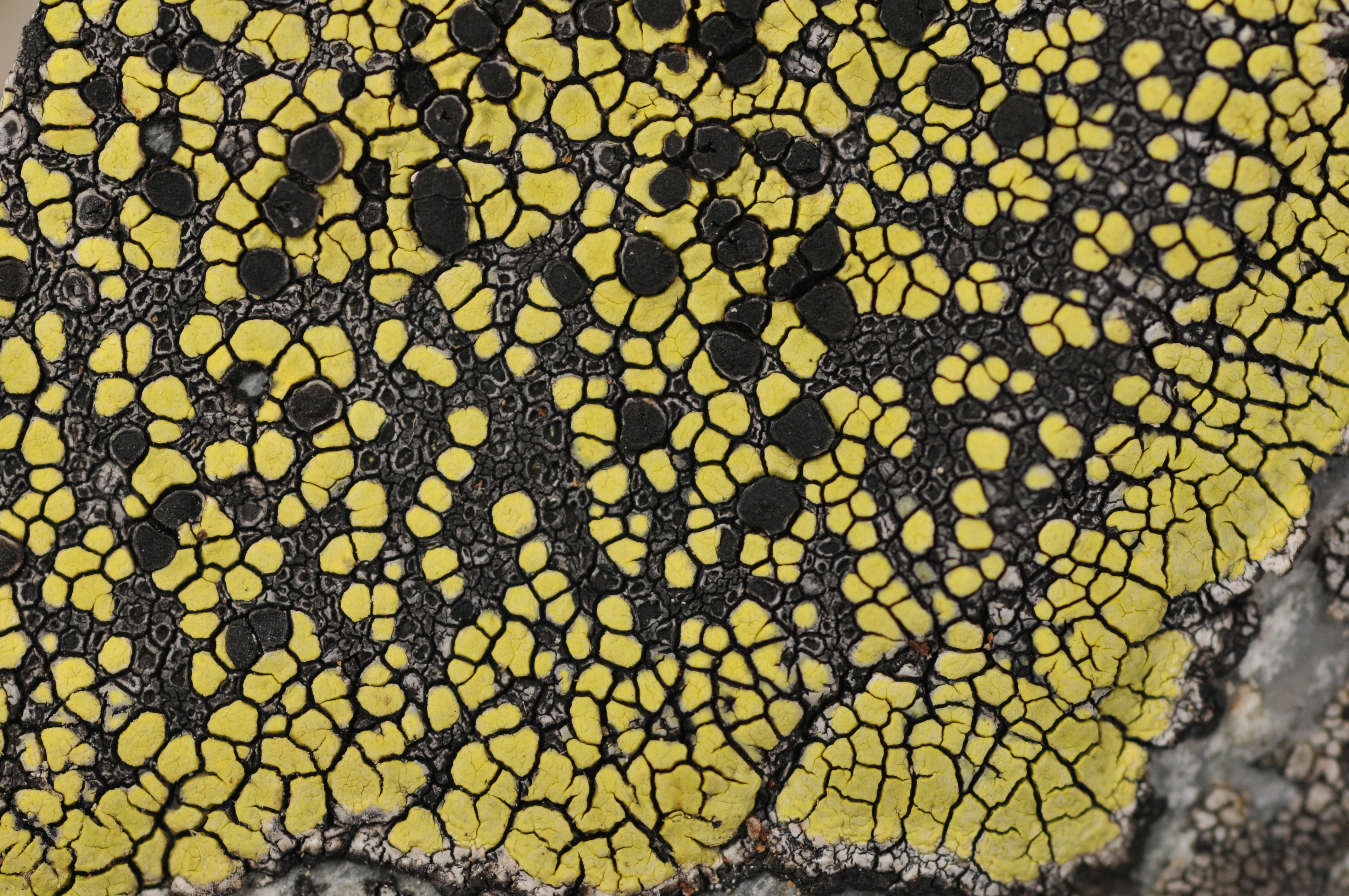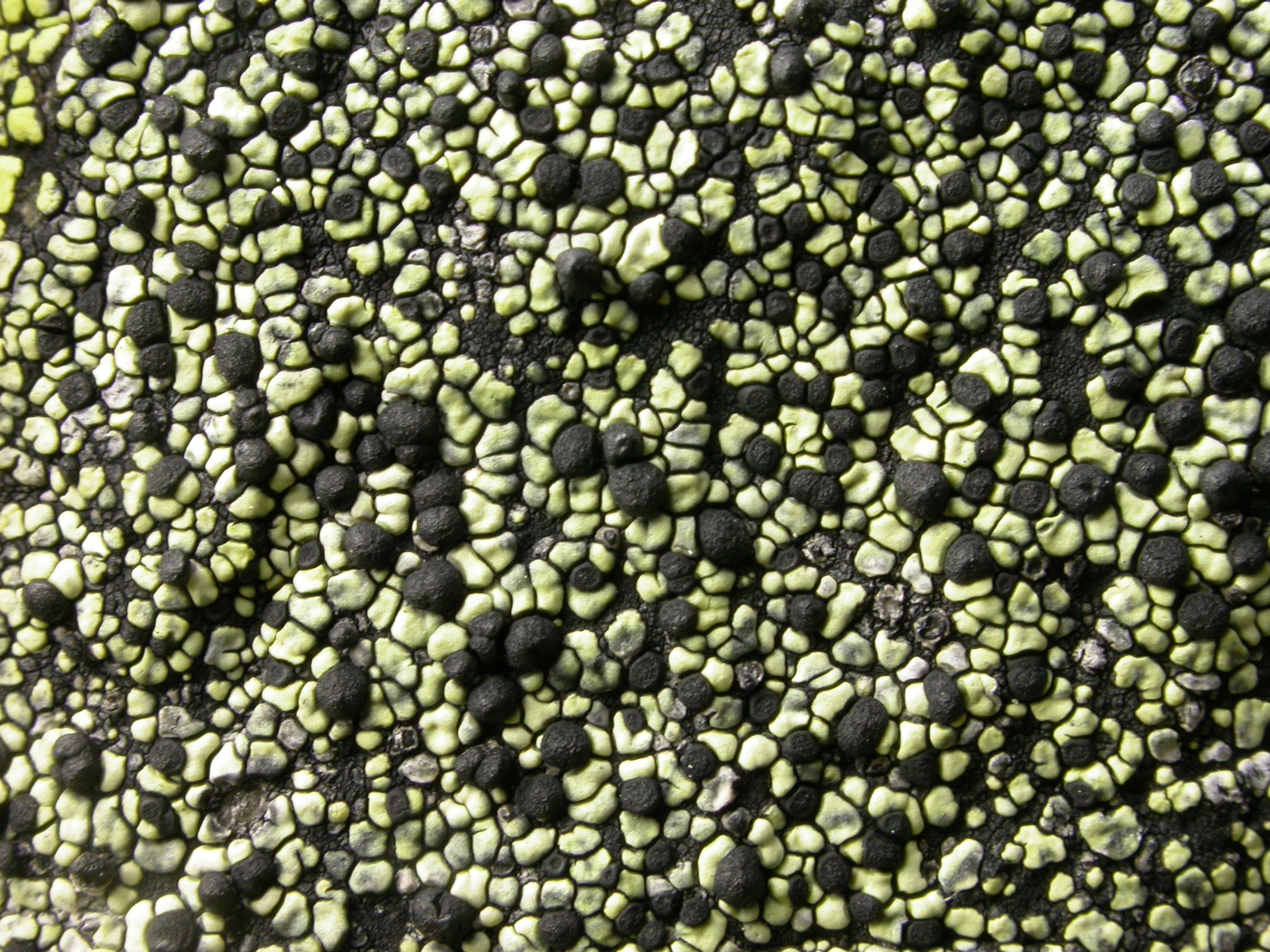Rhizocarpon superficiale
- Innhold
- Morphology
- Chemistry
- Habitat
- Comment
- Look-alikes
Morphology
Thallus areolate, up to 10 cm diam.; hypothallus well developed, black; areolae up to 1.5 (–2.5) mm diam., greenish yellow to bright yellow, dull, scattered to contiguous, angular to orbicular, weakly concave to strongly convex, smooth or scabrous; medulla KI–. – Apothecia up to 1 mm diam., black, epruinose, orbicular to somewhat angular, plane to weakly convex, usually persistently marginate; excipulum brownish black (K+ red) in the rim, inner part pale brown and containing crystals dissolving in K (K+ yellow, or K+ red, acicular crystals); hypothecium dark brown K–; hymenium colourless; epihymenium brownish black (K+ faintly red) or partly to entirely greenish brown (K–); no crystals or granules in the hymenium; ascospores 8 per ascus, 1-septate, dark brown, 11–18 × 6–8 µm. – Conidiomata not seen.
Chemistry
Rhizocarpic and stictic or norstictic acid; spot tests: medulla and exciple PD+ orange and K+ yellow or PD+ yellow and K+ red, C–.
Habitat
On siliceous rock at exposed sites in the mountains (ssp. boreale) or near the coast (ssp. splendidum).
Comment
Two subspecies are recognized in Norway. Ssp. splendidum (Malme) Runemark differs from ssp. boreale Runemark in having larger (usually more than 1 mm diam.), contiguous, smooth, and greenish yellow areolae which always contain norstictic acid, whereas ssp. boreale has smaller (usually less than 1 mm diam.), contiguous to scattered, often scabrous, and bright yellow areolae containing either stictic or norstictic acid.


